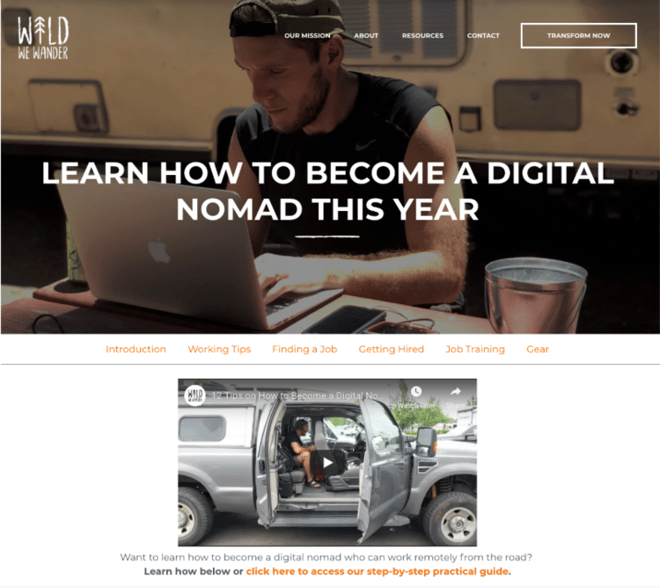Tips & Tricks - Get More out of Wipster
If you're a new user of Wipster or have just missed some of our recent updates, you might have missed some things:--Wipster's suite of integrations...
3 min read
![]() Wipster Content Team
:
Apr 19, 2020 8:52:00 PM
Wipster Content Team
:
Apr 19, 2020 8:52:00 PM
HubSpot Academy has been on a mission to transform business. They create free educational courses for aspiring marketers to be more productive and efficient in their day-to-day roles.
We were pretty excited when they reached out to us to help develop content for their first-ever Online Video Marketing Course.
In this 10-minute lesson, we provide a high-level framework on how to:
Know your audience, and the type of video is best suited to them
Determine topics for videos
Create goals for each video
Own the video process at your business
Project manage video making and sharing
Create a repeatable process
Determine your video toolkit (for production and post-production)
Measure and analyze video metrics
Start by defining very clearly the persona of your audience: Imagine the person on the other side of the camera. What do they care about?
“Think of video as entertainment, not as advertising
When it comes to promoting a video on different channels (your website, social media, or email) you, want to make sure your content fits with the spirit of the channel as well as how people behave on that particular channel. Sometimes it helps to think of LinkedIn, Twitter and other social media like TV channels—HBO, ESPN, the History channel.
Videos can have both soft and hard targets. At Wipster, we use a goal framework with three categories:
brand moment
business moment
entertainment moment
“Every video is responsible for conveying a clearly defined set of corresponding ‘moments’ to your audience
Brand Moments are company milestones; this includes product launches, new employees, and other company-related news we’d like to share.
Business Moments are goals for the business (revenue, recruitment, investment).
Entertainment Moments are what makes the video enjoyable to watch (otherwise its just data!).
We created a Wipster Portland Office video and defined its goal framework as follows:
Brand moment
Wipster mission and office expansion in the US
Business moment
Promote roles we’re recruiting and hiring for in Portland
Entertainment moment
Our obsession with LaCroix
“Your video topics and collections should align to your overall content marketing strategy
Collections are like a mini-series covering a set of issues that are indirectly related to your business but of interest and relevance to your specific audience.
Come up with a list of questions that your videos will answer.
You can check out a couple of examples of content collections on Wipster’s YouTube page. Wipster is a video collaboration platform for creative video and marketing teams, so our video series—or “collections” answer problems relating to post-product workflow and collaboration.
The titles of your topics should be written based on what people search for in Google. One of your goals is to rank for the broad topic, “digital nomad.” In this case, a video titled “12 tips on how to become a digital nomad,” would be a compelling video title in support of awareness for this broad topic. You can watch this video below.
To go a step further, you should consider pairing your video content with text-based content, like a blog post.

The marketing team will be responsible for video content, but who will own the content calendar? The video making and publishing process has three categories:
Project management
Content plan and schedule
Video Making
Shooting, editing, graphics, and sound-mixing
Sharing
Publishing, tracking analytics and responding to viewer comments
If you’re a more prominent company you will have a team, but if you’re smaller, don’t worry - this can be one person.
“Without a clear video content owner and plan, your video process will be reactive and ad hoc instead of intentional and strategic
If you don’t follow the three “Cs”, you’ll struggle.
Commitment
You must commit for a certain amount of time and a certain number of pieces of content. We recommend 100 videos over 90 days.
Calendar
Create a weekly routine and stick to it
Content
Write your mini-series upfront and deliver to schedule
Production
Equipment needed to create a script and shoot video. Don’t worry about how professional your equipment is to start.
Post-production
Equipment to edit, collaborate, and deliver content
Don’t worry about professional equipment as you start. A mobile phone and free editing software are excellent.
“Remember is that you can scale your equipment as needed; simply start with the essentials and build out as you create more and more video.
We use the 10, 10, 10 rule to measure success.
Audience Views
Your video appears in shared with 500 people, did 10% view it?
Viewing Duration
Fifty people saw your video, did they stick around for at least 10 seconds?
Engagement
Did at least 10% of viewers Like comment or share?
If you are not hitting these numbers, your content is not engaging.
Commit to daily video making, embrace the feedback and keep iterating. Remember, its a craft (no one learns the piano in a day).
If you're a new user of Wipster or have just missed some of our recent updates, you might have missed some things:--Wipster's suite of integrations...
We’re excited to announce a powerful new integration that brings Wipster’s intuitive video review tools directly into Final Cut Pro (FCP). Designed ...
1 min read